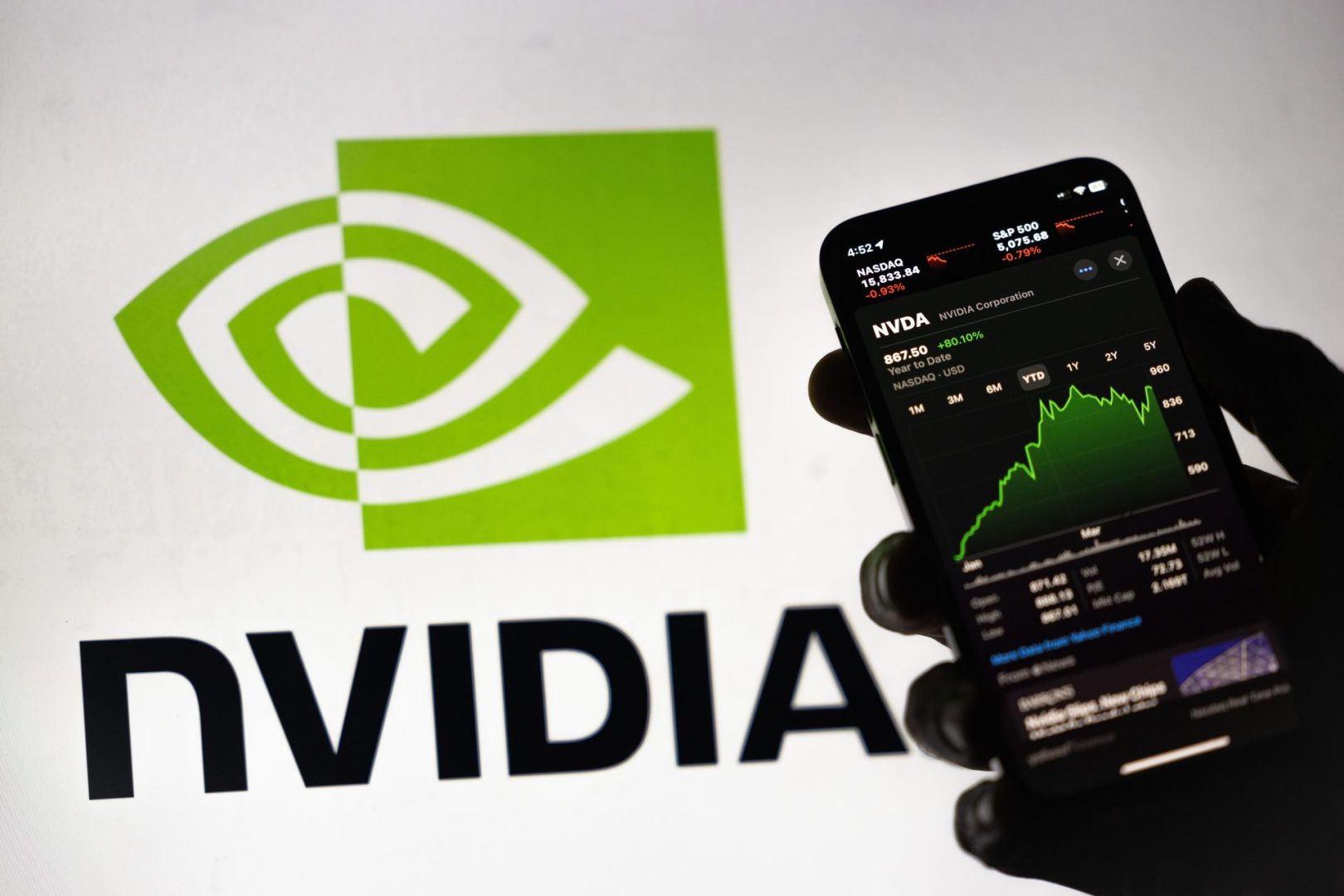Wall Street powerhouse Goldman Sachs has thrown its full support behind Nvidia with a new buy rating and ambitious $185 price target, signaling confidence in the AI chip giant’s continued dominance even after its historic climb to a $4 trillion market valuation. The endorsement comes as Nvidia solidifies its position as the undisputed leader in artificial intelligence hardware.
The timing of Goldman’s bullish stance speaks volumes about Nvidia’s trajectory in the rapidly evolving AI landscape. The investment bank’s decision to initiate coverage with such an optimistic outlook demonstrates institutional confidence in the company’s ability to maintain its competitive edge despite intense scrutiny and growing competition.
Nvidia’s recent achievement of briefly surpassing $4 trillion in market value places it among the world’s most valuable companies, a remarkable journey for a company that began as a graphics card manufacturer for gaming enthusiasts. This milestone reflects the massive shift in how investors view AI infrastructure and Nvidia’s central role in powering the technology revolution.
1. CUDA software creates unbreakable competitive moat
Nvidia’s dominance in accelerated computing stems largely from its CUDA software platform, which has become the industry standard for AI development and deployment. This proprietary technology creates a powerful competitive advantage that extends far beyond hardware manufacturing into the realm of software ecosystems.
The CUDA platform serves as the foundation for thousands of AI applications, from machine learning research to commercial AI deployments. Developers worldwide have invested countless hours learning and building upon this platform, creating a network effect that makes switching to competitors extremely difficult and costly.
This software-centric approach transforms Nvidia from a hardware manufacturer into an ecosystem provider, generating recurring revenue streams and deeper customer relationships. The company’s ability to monetize both hardware sales and software licensing creates multiple revenue channels that competitors struggle to replicate.
The extensive developer community built around CUDA represents years of investment and learning that would be difficult for competitors to match. This human capital investment in Nvidia’s ecosystem creates switching costs that go far beyond simple hardware replacement.
2. Customer base expansion drives sustainable growth
Nvidia’s customer base has evolved dramatically from its gaming roots to encompass virtually every sector embracing AI technology. Cloud computing giants like Amazon, Microsoft, and Google represent major customers, but the company’s reach now extends into healthcare, automotive, robotics, and financial services.
Healthcare companies are increasingly adopting Nvidia’s AI chips for medical imaging, drug discovery, and genomic analysis. These applications require massive computational power that traditional processors cannot efficiently provide, creating sustained demand for specialized AI hardware.
The automotive industry’s push toward autonomous vehicles has created another significant growth avenue for Nvidia. Self-driving cars require real-time processing of vast amounts of sensor data, a task perfectly suited to Nvidia’s AI acceleration capabilities.
Robotics companies represent an emerging customer segment with enormous potential. As robots become more sophisticated and autonomous, they require powerful AI chips to process sensory input and make real-time decisions, creating a new market for Nvidia’s products.
3. Rapid product innovation maintains technological leadership
Nvidia’s ability to maintain its competitive edge depends heavily on its rapid pace of product development and innovation. The company consistently introduces new chip architectures that deliver significant performance improvements over previous generations.
The company’s research and development investments continue to accelerate, with billions of dollars annually devoted to advancing AI chip technology. This sustained investment ensures that Nvidia remains at the forefront of AI hardware development while competitors struggle to catch up.
Product launch cycles have accelerated significantly as AI demand intensifies. Nvidia now introduces new chip architectures more frequently than traditional semiconductor cycles, responding to the rapid evolution of AI applications and computational requirements.
The company’s ability to successfully monetize its AI platforms while many competitors are still developing their offerings demonstrates the maturity of its technology and business model. This first-mover advantage in AI monetization provides significant revenue benefits that fund continued innovation.
4. Valuation remains attractive despite massive gains
Goldman Sachs’ analysis suggests that despite Nvidia’s remarkable stock performance, the company’s valuation remains attractive relative to its growth prospects and market opportunity. The $185 price target implies additional upside potential from current levels.
The AI market continues to expand at an unprecedented pace, with new applications and use cases emerging regularly. This expanding market provides a growing revenue base that supports higher valuations for companies positioned to capture this growth.
Nvidia’s dominant market position in AI chips allows it to capture a disproportionate share of industry growth. As AI adoption accelerates across industries, Nvidia benefits from multiple expanding markets simultaneously.
The company’s strong financial performance, including robust profit margins and cash generation, supports premium valuations. Unlike many technology companies that sacrifice profitability for growth, Nvidia maintains strong financial metrics while expanding rapidly.
5. Competition intensifies but advantages remain
While Nvidia faces increasing competition from established technology companies and specialized AI chip startups, its accumulated advantages make market share loss unlikely in the near term. Competitors face significant challenges in matching Nvidia’s comprehensive ecosystem approach.
Intel, AMD, and other semiconductor companies are investing heavily in AI chip development, but they must overcome both technological and ecosystem gaps. Building competitive products requires years of development and substantial investment with uncertain returns.
Cloud computing companies like Google and Amazon are developing their own AI chips for internal use, potentially reducing demand for Nvidia products. However, these companies also remain significant Nvidia customers for many applications, suggesting coexistence rather than complete replacement.
The complexity of AI chip development and the specialized knowledge required create barriers to entry that protect Nvidia’s market position. Few companies possess the combination of hardware expertise, software capabilities, and ecosystem relationships necessary to compete effectively.
Market outlook and investment implications
Goldman Sachs’ bullish rating reflects confidence in Nvidia’s ability to navigate the competitive landscape while maintaining growth momentum. The investment bank’s analysis suggests that AI demand will continue expanding faster than supply, benefiting market leaders like Nvidia.
The $4 trillion market valuation milestone represents more than just a numerical achievement – it signals institutional recognition of AI’s transformative potential and Nvidia’s central role in enabling this transformation. As AI applications continue expanding across industries, Nvidia’s position as the primary infrastructure provider becomes increasingly valuable.
Investors should monitor Nvidia’s ability to maintain its technological leadership while managing the challenges of rapid growth and intensifying competition. The company’s success in these areas will determine whether Goldman’s optimistic price target proves achievable.
















